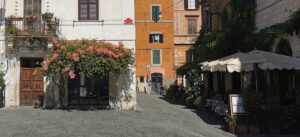Dear Insideaters, today we take you to another place declared a World Heritage Site by UNESCO. We are in Tivoli, a small town really not far from Rome. Tivoli can be reached out with the public bus and the regional train from the two main stations of Rome ( Termini – Tiburtina) in about 45 minutes.
Villa Adriana extends for 120 Roman hectares and resembles the line of Nerone’s Domus Aurea.
The work was the desired of the emperor Hadrian who personally directed the works. The emperor was so personally involved in the construction of the villa that the names of the architects who took care of it are still not known today.
Hadrian carefully chose the location of the villa, not far from the Roman Urbs but far from the chaos of Rome.
The villa as we see it today is devoid of many of the marbles that adorned it.
As often happened, the materials were extracted and reused for the construction of some medieval structures.

Villa Adriana was a real micro-city, within you could find dormitories for the militias, libraries, spas and theatres.
Very interesting is the fact that the villa had underground passages, through which they could move and unload persons and goods.
Among the structures that are most striking when visiting the villa, the Canopus is certainly the first one. It is inspired by the Egyptian canal that connected Alexandria of Egypt to the old city of Canopus. Canopus is where Antinous, the greatest love of Emperor Hadrian, mysteriously drowned.
The Canopus is composed of a large pool of water: 119×18 meters, framed by a double colonnade that originally supported a pergola. On the west side, instead of the columns, there are now 4 Caryatids, reproductions of the Athenian ones.
Originally there was also a statue depicting the Nile, and one depicting Rome. It also seems that there was a complex hydraulic mechanism, responsible for representing the flood of the Nile.
The basin ends with an exedra covered by a dome, an area that was dedicated to banquets.

The visit continues revealing how Roman architecture was impressive, detailed and profoundly advanced.
At the end of the tour, you will discover the most particular structure, the Maritime Theater. The theatre has become the symbol of the villa’s innovative architecture.
A real Domus on the water. The interior space is small but perfectly exploited to create all the environments suitable for the emperor’s needs. A place where to think and express creativity. The structure is surrounded by a watercourse and was accessed via two wood swing bridges.
Today the structure still hosts many shows ranging from theatre, music, ballet and cinema.
Every year, Villa Adriana sees more than 250,000 tourists pass by and is among the most visited sites in the world.
Perhaps the interest of visitors is not only linked to the charm of Imperial Rome or the figure of the emperor Hadrian, but there is also a gastronomic interest. In fact, the villa is home to about 3000 olive trees and every year the olives are harvested for the production of extra virgin olive oil, very well known in the Tivoli area.
Today, Villa Adriana, Villa D’Este and Villa Gregoriana are also part of food and wine project that aims to promote the gastronomic excellences of Tivoli: oil (Villa Adriana) and pizzutello grapes (Villa d’Este and Villa Gregoriana).
So Insideaters, are you ready for this historical-gastronomic journey in the beautiful Tivoli?
Follow us to find out more!










